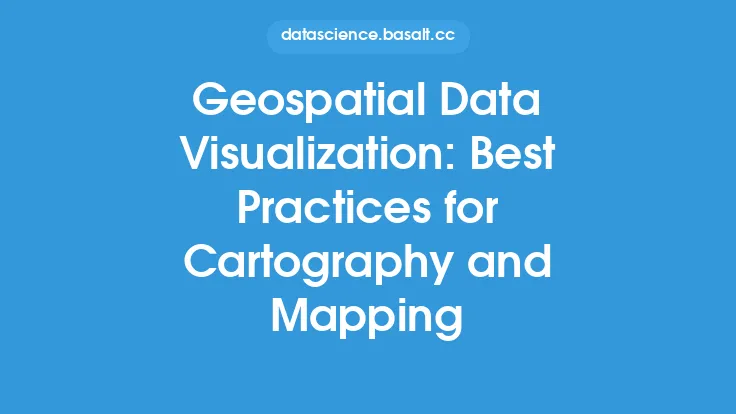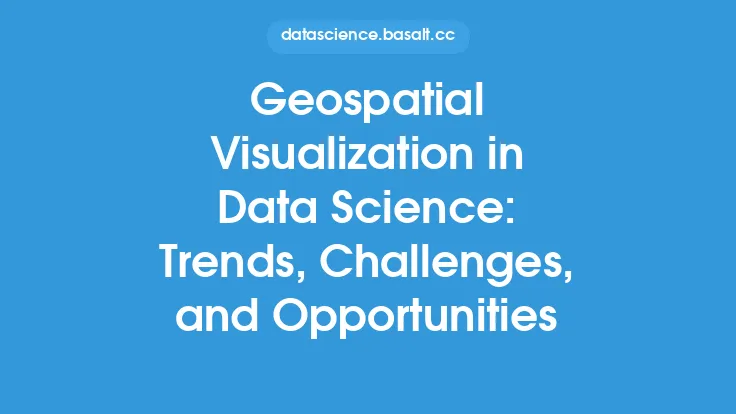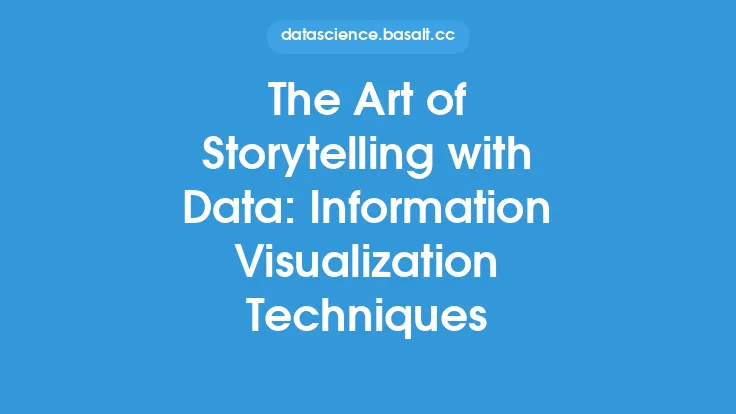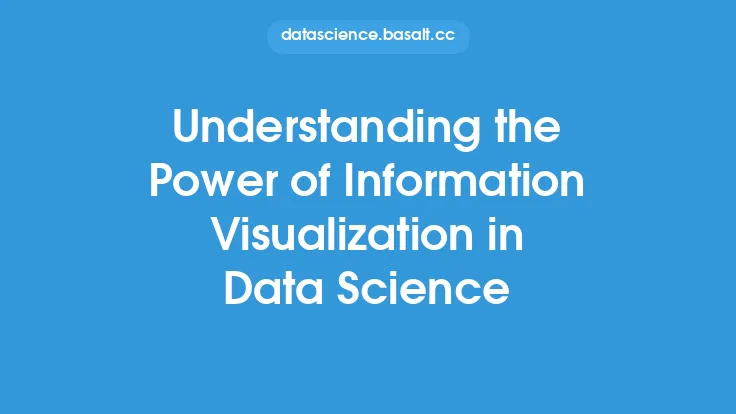The field of geospatial visualization has undergone significant transformations in recent years, driven by advances in technology, the increasing availability of geospatial data, and the growing need to communicate complex spatial information effectively. At its core, geospatial visualization is the process of creating graphical representations of geographic data, which can include maps, 3D models, and other visualizations that help to convey spatial relationships, patterns, and trends. This article will delve into the art and science of geospatial visualization, exploring the key concepts, techniques, and tools that underpin this field.
Introduction to Geospatial Visualization Concepts
Geospatial visualization is built on a foundation of geographic information systems (GIS) and spatial analysis. GIS provides the framework for capturing, storing, and analyzing geospatial data, which can include information on locations, distances, and spatial relationships. Spatial analysis, on the other hand, involves the use of statistical and mathematical techniques to identify patterns, trends, and correlations within geospatial data. By combining these two disciplines, geospatial visualization enables the creation of interactive and dynamic visualizations that can be used to explore, analyze, and communicate geospatial information.
Geospatial Data Types and Sources
Geospatial data can be broadly categorized into two types: vector and raster data. Vector data represents geographic features as points, lines, and polygons, and is often used to create maps and other visualizations that require precise spatial relationships. Raster data, on the other hand, represents geographic features as a grid of pixels, and is often used to create visualizations that require detailed spatial information, such as satellite imagery and digital elevation models. Geospatial data can be sourced from a variety of locations, including government agencies, satellite imagery providers, and crowdsourced platforms. The increasing availability of geospatial data has created new opportunities for geospatial visualization, enabling the creation of more detailed and accurate visualizations.
Geospatial Visualization Techniques
There are several techniques that are commonly used in geospatial visualization, including mapping, 3D modeling, and spatial analysis. Mapping involves the creation of two-dimensional representations of geographic data, and can include techniques such as choropleth mapping, which uses different colors to represent different values or categories. 3D modeling involves the creation of three-dimensional representations of geographic data, and can include techniques such as terrain modeling and building modeling. Spatial analysis involves the use of statistical and mathematical techniques to identify patterns, trends, and correlations within geospatial data, and can include techniques such as spatial autocorrelation and spatial regression.
Geospatial Visualization Tools and Software
There are several tools and software that are commonly used in geospatial visualization, including GIS software, programming libraries, and web-based platforms. GIS software, such as ArcGIS and QGIS, provides a comprehensive framework for capturing, storing, and analyzing geospatial data, and includes a range of tools and techniques for geospatial visualization. Programming libraries, such as Leaflet and D3.js, provide a flexible and customizable framework for creating web-based geospatial visualizations. Web-based platforms, such as Google Maps and Mapbox, provide a range of tools and services for creating and sharing geospatial visualizations, and can include features such as interactive maps and 3D models.
Applications of Geospatial Visualization
Geospatial visualization has a wide range of applications, including urban planning, environmental monitoring, and emergency response. Urban planning involves the use of geospatial visualization to create detailed maps and models of cities and towns, which can be used to inform planning decisions and optimize urban design. Environmental monitoring involves the use of geospatial visualization to track changes in the environment, such as deforestation and climate change, and can include techniques such as remote sensing and spatial analysis. Emergency response involves the use of geospatial visualization to create detailed maps and models of emergency situations, such as natural disasters and search and rescue operations, and can include techniques such as spatial analysis and 3D modeling.
Challenges and Limitations of Geospatial Visualization
Despite the many advances in geospatial visualization, there are still several challenges and limitations that need to be addressed. One of the main challenges is the increasing complexity of geospatial data, which can make it difficult to create effective visualizations. Another challenge is the need for specialized skills and knowledge, which can make it difficult for non-experts to create and interpret geospatial visualizations. Additionally, there are several limitations to geospatial visualization, including the potential for bias and error in geospatial data, and the need for careful consideration of issues such as scale, projection, and symbolization.
Future Directions of Geospatial Visualization
The field of geospatial visualization is constantly evolving, driven by advances in technology and the increasing availability of geospatial data. One of the main future directions of geospatial visualization is the use of artificial intelligence and machine learning, which can be used to automate the process of geospatial visualization and create more detailed and accurate visualizations. Another future direction is the use of virtual and augmented reality, which can be used to create immersive and interactive geospatial visualizations. Additionally, there is a growing need for more effective and intuitive geospatial visualization tools and software, which can be used by non-experts to create and interpret geospatial visualizations.
Conclusion
Geospatial visualization is a powerful tool for communicating complex spatial information, and has a wide range of applications in fields such as urban planning, environmental monitoring, and emergency response. By combining geographic information systems, spatial analysis, and visualization techniques, geospatial visualization enables the creation of interactive and dynamic visualizations that can be used to explore, analyze, and communicate geospatial information. As the field of geospatial visualization continues to evolve, it is likely that we will see new and innovative applications of this technology, and a growing need for more effective and intuitive geospatial visualization tools and software.





